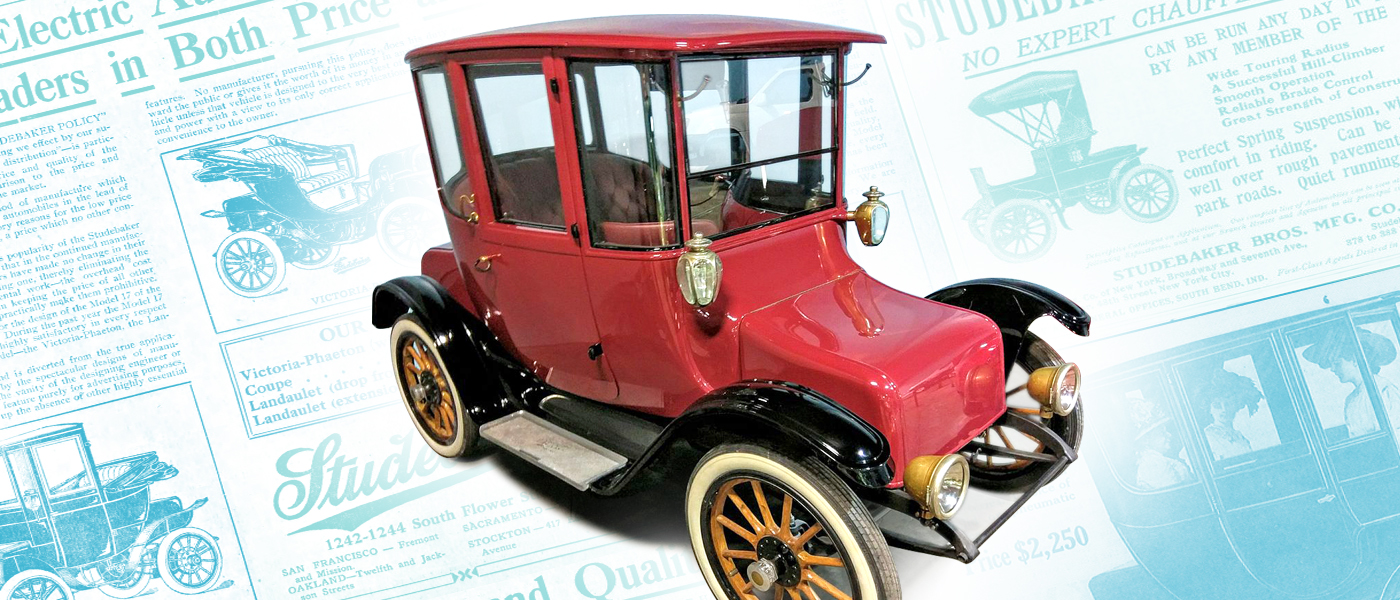NEWS
The Rise and Decline of Early Electric Cars
With the current surge in popularity of the electric car, it’s hard to believe that a century ago this same idea was playing a major role in early automotive history.

Electric Avenue
During World War II, I vividly remember seeing an electric car or two parked on South Meridian Street in downtown Indianapolis near L.S. Ayres department store, and occasionally one in the area of 18th & Talbott Street that was rumored to belong to Mrs. Otto Frenzel, Sr., mother of the Merchants National Bank president.
After World War II, these early electric automobiles would begin to fade from the streets, but at the turn of the twentieth century the picture was much different: 40 percent of American automobiles were powered by steam, 38 percent by electricity, and an amazingly low 22 percent by gasoline. At that time, 33,843 electric cars were registered in the United States. Sales peaked in the early 1910s. They were upscale in price and featured luxurious interiors.
Here in Indiana, several manufacturers toyed with the electric car. Studebaker built an electric car from 1902 to 1912. Pope-Waverly built electric cars in Indianapolis from 1904 through 1914. The most notable manufacturer was probably the Detroit Electric Car Company, which produced electric cars from 1907 to 1930.
Power to the people
Several factors contributed to the electric cars’ demise even though they had certain outstanding advantages over gasoline-powered automobiles. They were simple to operate compared to the gasoline vehicles. There was no vibration. Drivers did not have to hand crank to start the motor. These features made the electric car particularly interesting to women of means for their travel on the brick streets of Indianapolis and other cities.
The electric car was strictly a city car, having a maximum range of 70 miles without a recharge and a maximum speed of 20 mph. With the advent of electricity in finer homes, recharging the lead-plated batteries in the electrics was quite simple, and the cars didn’t need a lot of maintenance.
When batteries started to wear out, a quick trip to Kistner Battery Company on St. Clair Street in Indianapolis (between Meridian and Illinois) was a simple service call. Kistner sold new batteries but was also noted for rebuilt batteries sold at one-third the cost. While waiting on repairs, women could journey across the street to the main branch of the Indianapolis Public Library to while the time away reading their favorite magazines or the New York Times.
Cutting the cord
But times do change. The electric starter invented by Charles Kettering in 1911 eliminated the hand cranking of the gasoline-powered automobile. Electric lights also eliminated the acetylene gas lights made predominately by Carl Fisher and James Allison’s Prest-O-Lite Company in Speedway.
Then there was the cost. Henry Ford kept bringing the cost of the automobile down while raising its speed. Gasoline-powered automobiles increased to twice the speed of the electric car, which maxed out at 20 mph. More importantly, the gasoline-powered automobile could go triple the distance of the electric car. As crude oil prices started to tumble in the 1920s and onward, the cost of gasoline also declined. Finally, the post-war period of the early 1920s brought about a revolution in state road construction between major cities throughout the United States. Paved concrete roads replaced the stone roads of the past, allowing automobiles to triple their speeds in comparison to the electric car.
Times, however, are changing yet again. With the advent of the modern lithium battery, it appears that the electric car or a gasoline hybrid may be the new wave. The Tesla now offers a 200-mile-plus range with speeds and acceleration almost beyond ability of the average driver to comprehend. The old adage “What goes around, comes around” might be appropriate as we look to the future.
By George Maley, Board Member, Indiana Automotive
Stay up to date on the latest news, stories, and events from Indiana Landmarks, around the state or in your area.
